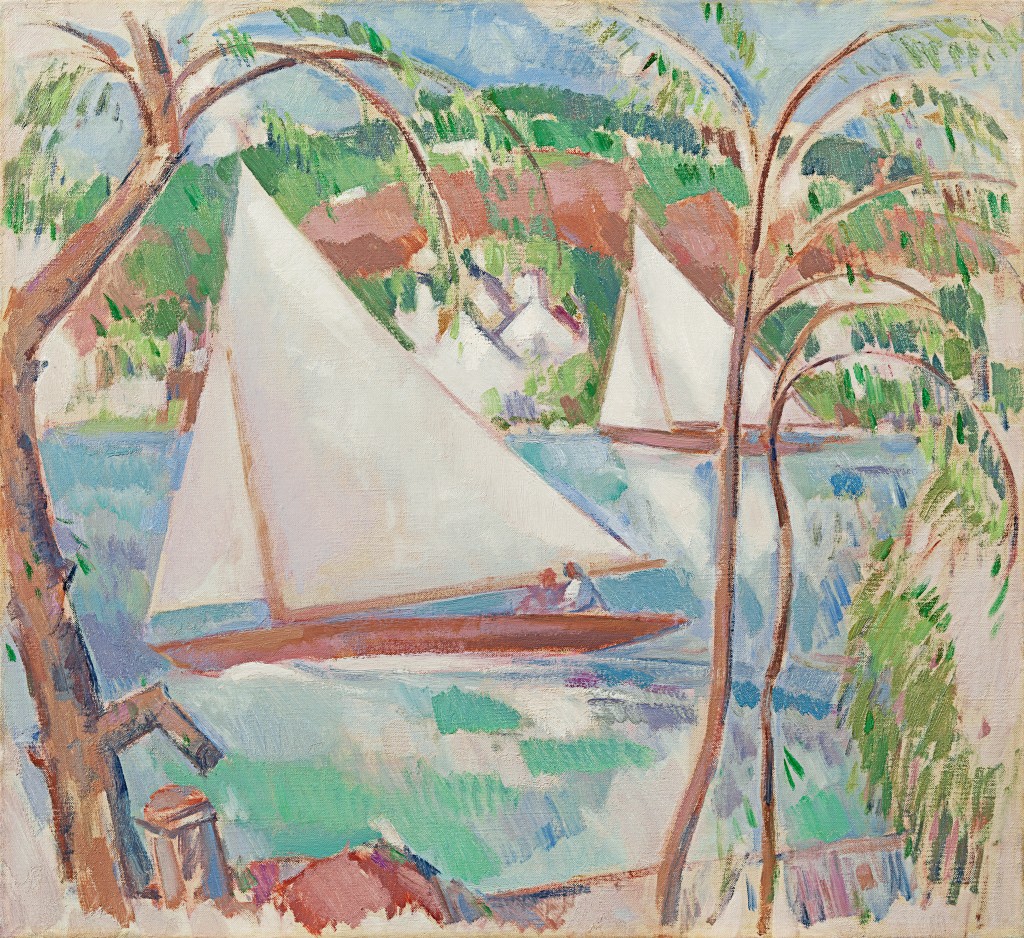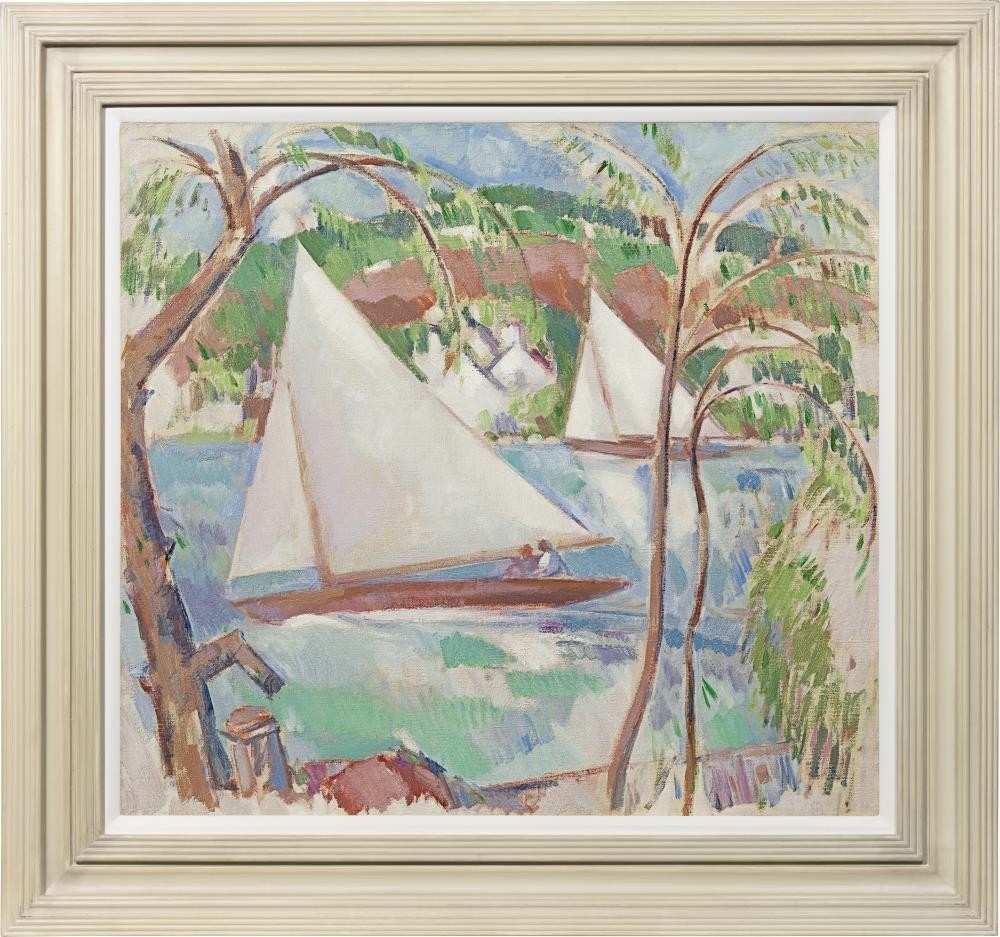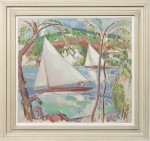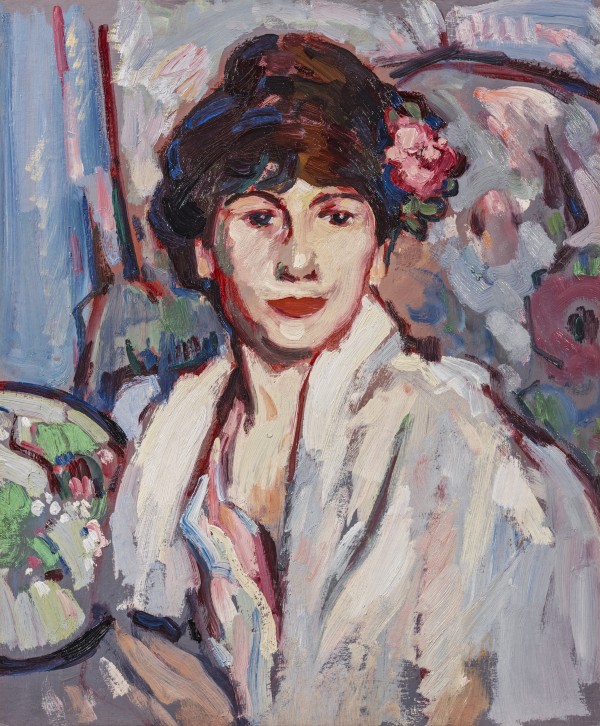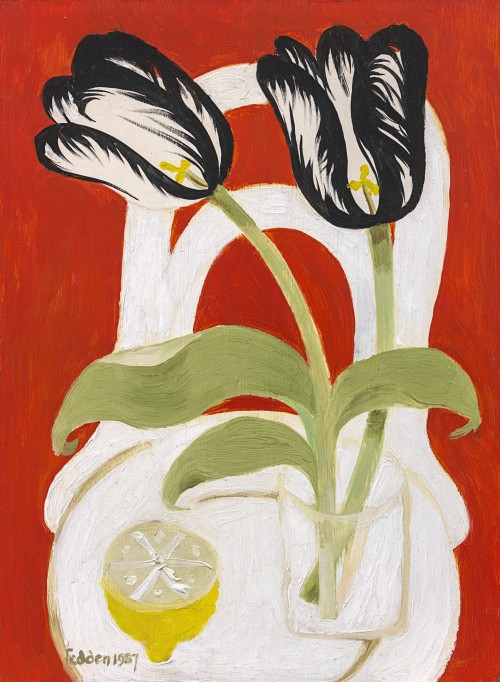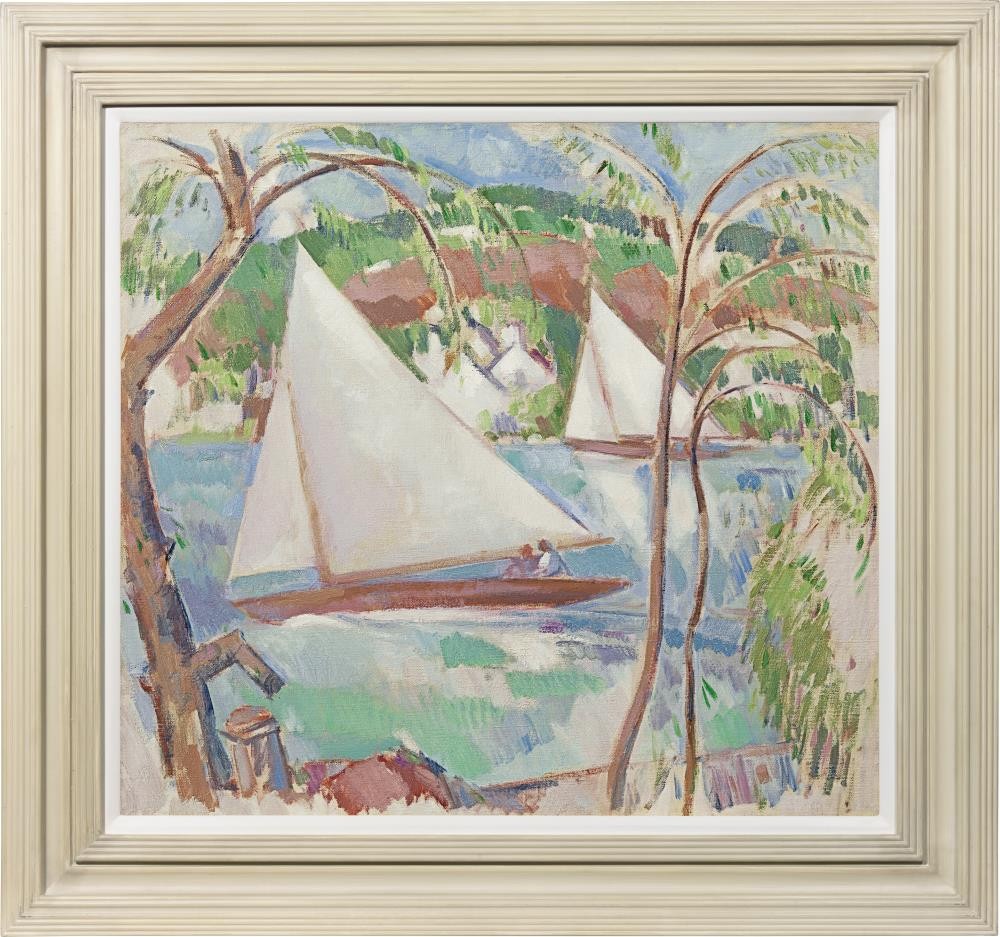JOHN DUNCAN FERGUSSON RBA
Leith 1874 - 1961 Glasgow
Ref: CB 179
Yachts, Bourne End
Signed and dated on the reverse: J. D. FERGUSSON. / - 1927
Oil on canvas: 22 x 24 ¼ in / 55.9 x 61.6 cm
Frame size: 29 x 31 in / 73.7 x 78.7 cm
In a painted and wax-polished Whistler style frame
Provenance:
Alexander Reid & Lefevre, London
Private collection
Sotheby’s Edinburgh, 23rd March 1993, lot 278;
Mary Mabel Tannahill (1932-2022) and her husband David Jones, acquired from the above
Exhibited:
London, Lefevre Gallery, Painting & Sculpture by JD Fergusson, February 1928, no.9
Literature:
W Egerton Powell, Artwork, vol.4, Spring 1928, no.13, p.6, illus. p.7
John Duncan Fergusson’s Yachts, Bourne End is a Post-Impressionist masterpiece of light, colour and dynamic form. The luminous, triangular sails of two sleek yachts dominate the nearly square canvas, their bright reflections fractured across the beautiful blue green water. The warm red-brown of their masts and hulls is echoed in the picturesque, natural landscape which surrounds them. In contrast to the geometric sails, the framing foreground trees stretch up to the top of the canvas in undulating curves, their arching branches and fresh green leaves further energising the scene.
This important painting was included in Fergusson’s solo exhibition at the Lefevre Gallery, London in 1928 and was written about by W Egerton Powell in his review for the journal Artwork: ‘Of the re-actionary movement which came later and is generally known as “Post-Impressionism,” there are good grounds for believing that the most virile exponent in Great Britain is John Duncan Fergusson…Mr Fergusson, even before 1914, was accepted there [in Paris] as a chef d’école and painter of importance. Since it is very many years since he had a one-man-show in London, and since he very rarely exhibits anywhere in London, the Fergusson Exhibition at the Lefevre Galleries this February has been an event of importance. It demonstrates effectively that though Fergusson probably knows far more about the latest Parisian theories of painting than any stalwart of Bloomsbury, he is the most personal and least derivative of any British post-impressionist. Fergusson’s gifts are many. He is a fine virile draughtsman, as befits a fellow-countryman of Raeburn. He is a really intoxicating colourist, his schemes being radiantly gay and bright, joyous without being cloying. And he is an immensely learned and skilful designer in three dimensions. For sheer decorative beauty the claims of such pictures as “Yachts, Bourne End,” “The Valley, Cassis,” or “At the Bathing Place” are undeniable.’[1]
This painting was exhibited as Yachts, Bourne End, which suggests the location is near Marlow in Buckinghamshire, and may even depict the Bourne End Week Regatta in June at Upper Thames Sailing Club, also known at the time as ‘Cowes on Thames.’ British Pathé footage of the event the year before captures the elegance of the boats on the river in the Race for the Queen’s Cup: http://ww.britishpathe.com/asset/52142
Twilight, Royan, 1910 On the beach at Tangier, 1899 Bathers and Yachts, 1931
Oil on board: 27 x 34.9 cm oil on canvas: 75.9 x 75.9 cm Oil on canvas: 92.5 x 73.5 cm
National Galleries of Scotland : Kelvingrove Art Gallery & The Fegusson Gallery, Perth
Modern Museum
The Breeze, Antibes, 1913-14 Blue Submarine: Portsmouth Golfe-Juan, 1937
Oil on canvas: 54 x 65 cm Harbour, 1918, Oil on canvas: Oil on canvas: 54.6 x 65.4 cm
Government Art Collection 61 x 56 cm The Fergusson Glasgow Museums
Gallery, Perth
[1] W Egerton Powell, Artwork, vol.4, Spring 1928, no.13, pp.5-6.


